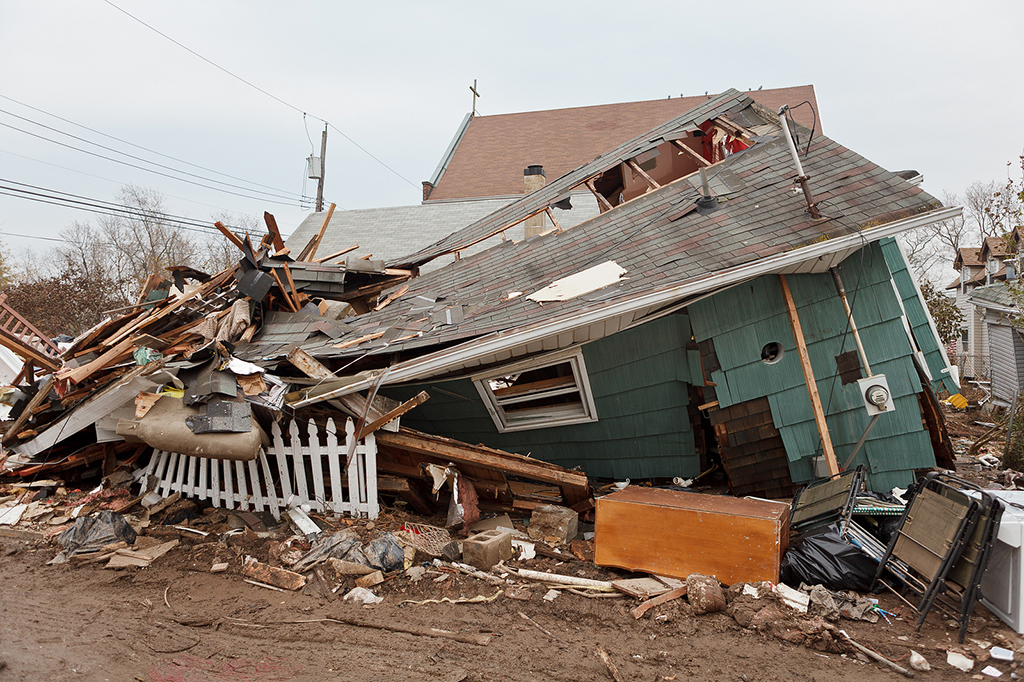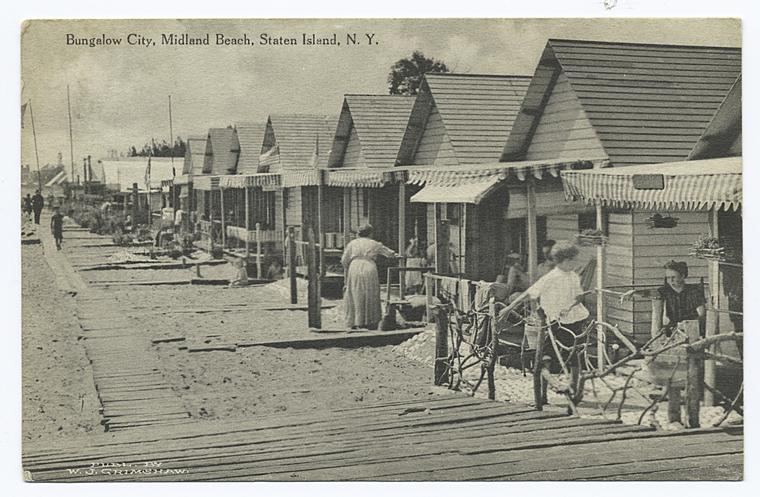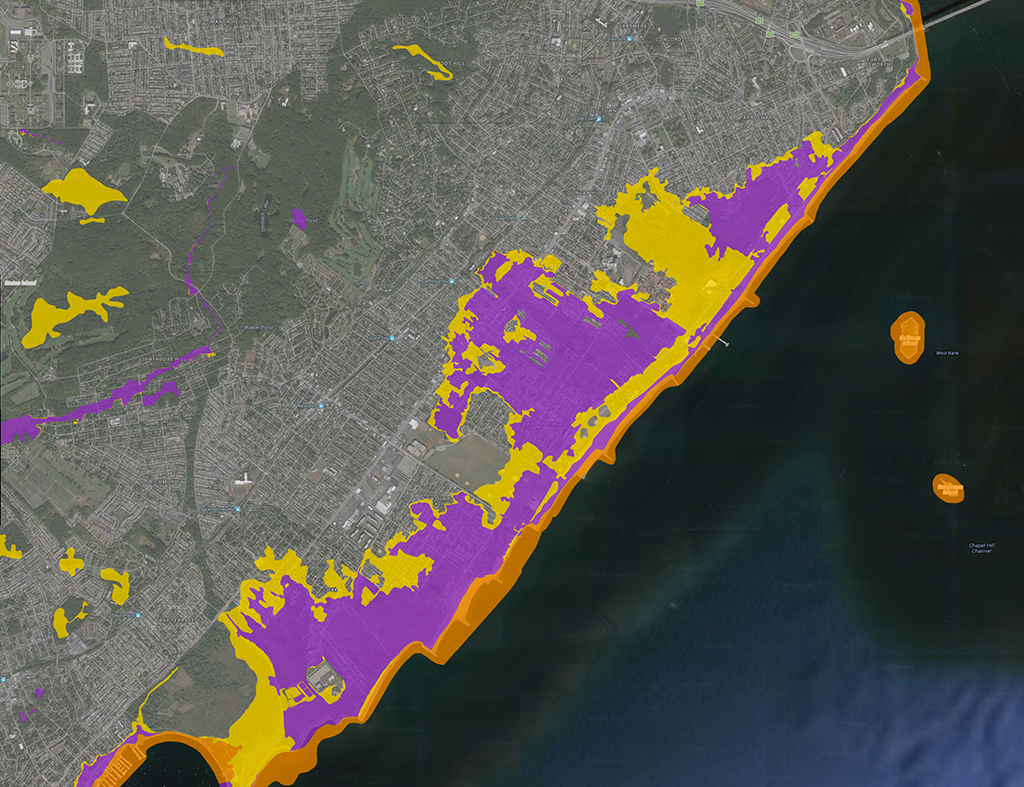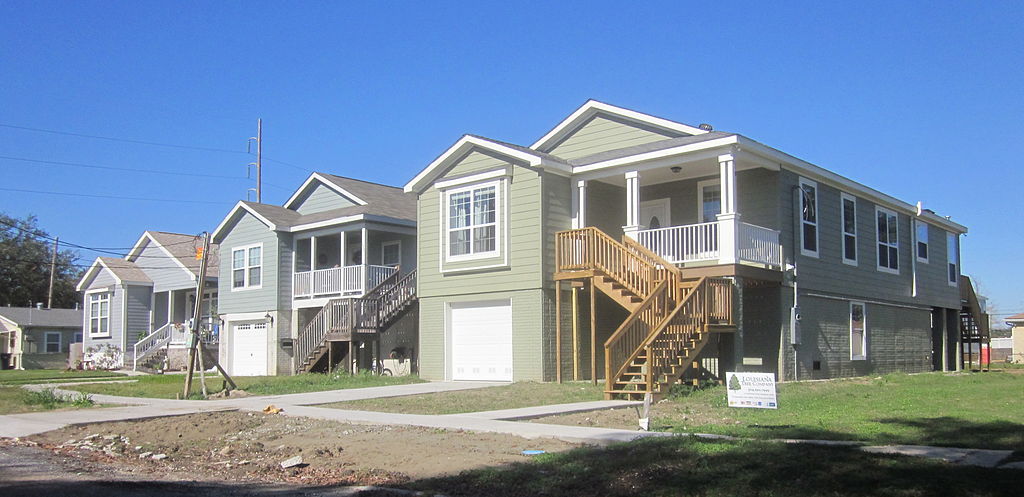
We are celebrating 15 years — and counting — of stories that are deeply researched and deeply felt, that build a historical record of what the city has been.
We are celebrating 15 years — and counting — of stories that are deeply researched and deeply felt, that build a historical record of what the city has been.
Rene Jones, leading the proceedings, reeled off a steady patter of classic auctioneer’s chant, punctuated by the cries of her assistants — “Yes!” — as they identified the raised paddles of bidders in the crowd.
The New York State public auction took over the well-appointed ballroom of the Hilton Garden Inn Staten Island on May 10. The participants, facing the podium in neat rows of cushioned chairs, had come mostly in pairs and trios: families, friends, and business associates. All were united in their eagerness to walk away with one of the 62 residential properties at auction, mostly single-family bungalows on the East Shore of Staten Island that had been damaged during Superstorm Sandy in October 2012.
Few bidders, however, were already skilled with the paddle. Following a “winner’s choice” model, a given round’s highest bid set the purchase price for each of up to five remaining properties in that round. So, if a participant won a round with a bid of $300,000, she would have the opportunity to buy any remaining property for $300,000, any two for $600,000, and so on. The format wasn’t intuitive, and even after an hour of explanation and practice, there were gaffes. The winner of the second round thought he was eligible to buy up to five properties for a total of the price that he bid, prompting Jones to retort that there were “no Groupon offerings” for the homes at auction. Another group put in a winning bid but hadn’t pre-agreed on the property they desired, and ran out the clock with their debate. Nevertheless, by the end of the day, all New York City properties were off the block, and the State had netted more than $9.1 million.
The auction, lasting roughly four hours all told, was a major milestone in a post-Sandy rebuilding process that has dragged on for nearly as many years. The State had purchased the storm-damaged properties from homeowners, working with the “Acquisition for Redevelopment” pathway of Build it Back, the City’s Sandy recovery program. Acquisition for Redevelopment brought financial relief for residents who lacked the will or the wherewithal to rebuild what they had lost; the auction was to follow up by clearing the way for new, safer waterfront development.
Many of the properties on offer still featured walls stripped to their studs or boarded-up windows, and some were simply vacant lots. But even before the storm, most were not of solid stock. The homes on the docket averaged a modest 1,048 square feet, the smallest a gray, 484 square foot cottage on Seafoam Street in Cedar Grove. For context, that’s a single-family home less than two-thirds the size of an already cramped one-bedroom apartment in New York City. The houses were as old as they were undersized: The average property at auction was more than 80 years old, and the oldest a venerable 115. All sat at street level in an area where modern building and zoning regulations mandate up to eight feet of elevation above grade. Given these realities, the May auction offered an opportunity less to build the neighborhood back than to radically reimagine it, continuing the storm’s erasure of the coastal bungalow, a historic housing typology that for more than a half-century had represented both a singular risk and a unique opportunity for unsubsidized affordable homeownership in New York City.
As the lowest-lying part of Staten Island, exposed to the Lower Bay, the East Shore was always vulnerable to damaging storms — hurricanes and Nor’easters touched down twice in the ‘30s, three times in the ‘50s, and three times in the ‘90s, to name a few. But Superstorm Sandy delivered unprecedented destruction. Of the 43 New York City fatalities attributed to the storm, 17 — nearly 40 percent — occurred within four East Shore neighborhoods. Pummeled by a peak tide up to 16 feet, more than 8,500 of the neighborhoods’ buildings were damaged, and more than 70 completely destroyed. One pair of survivors made it out of their home only by leaping onto a neighbor’s roof as it floated past. Nearby, a house was dragged completely off its plot, found slumped in a neighboring wetland.
As in previous storms, the area’s elevation and position in the Bay contributed significantly to its losses. But in the aftermath of Sandy, the devastation on the East Shore would be attributed not as much to geography as to typology. Low-lying areas elsewhere in the five boroughs also saw their fair share of damage — heat and power outages, washed out streets, and molding drywall. But their buildings were still standing when the storm dissipated, and very little of the impact was fatal. Not so on the East Shore. According to City analysts, one-story, wood-frame buildings built before 1961, primarily coastal bungalows like the majority of the homes at auction, were four times as likely to sustain severe damage as any other building type in the City’s floodplain. Many of those who died on the East Shore were elderly residents who had drowned in their small, old, and fragile homes.
If the bungalow was heaving its last gasps in 2012, it drew its first breaths in 1880. That year a group of local boosters, seeking to compete with developments across the bay in Coney Island, began to marshal public opinion for a railway link between the ferry to Manhattan and Staten Island’s South Beach. The plan was shortly realized, and the shore soon became a magnet for summer tourists — the Times heralded “tremendous crowds” in the years to follow, noting that the area had “grown wonderfully in popularity” due to improved transit. By 1902, two more railroads served the area; on a single Sunday in May, a combined 13,000 visitors came to the East Shore to escape the City’s heat. Along with this influx of seasonal visitors came the attendant hotels, boardwalks, and amusements — as well as colonies of small, single-story bungalows, seasonal housing for families spending their summers at the shore. Soon, droves of people were renting properties from bungalow landlords like James Graham, who operated three colonies and rented to 10,000 tenants. Eventually, the hotels and boardwalks were shuttered and the summer resort economy waned. But the bungalows remained, proving adaptable to the City’s changing circumstances.
As the city expanded and the housing market contracted, these part-time getaways for the wealthy evolved into unusually affordable year-round residences. This trend was particularly pronounced in the ‘40s and ‘50s, when a growing housing crisis drove a swell of working class residents to make do in Staten Island’s largely uninsulated, wood-frame bungalows. Many of the units have since been passed down from generation to generation and grandfathered into compliance despite failures to meet modern safety measures such as those that call for increased elevation and construction in masonry, steel, and other, heavier materials. Other bungalows changed hands or underwent alterations and additions. Nevertheless, they all remained a rare opportunity for unsubsidized affordable homeownership in New York City, precisely because of their older, lighter construction and tight living quarters. As Walter Meyer, principal of Local Office Landscape Architecture explains, “there’s a [bungalow] typology within the coastal outer borough . . . which is native to the coastal areas all over the East Coast. Because it’s small and currently [out of] code, it’s the only starter home in New York.” Without that housing stock, he continued, “we’re a missing a rung in the ladder between subsidized and unsubsidized housing.” If the same characteristics that brought bungalows into the reach of the middle class make them too dangerous to live in, Sandy, and the auction, beg the question of what will be rebuilt in their place, and for whom.
If nothing else, one thing any new development on the East Shore must be is tall. Federal flood maps regulating building heights in New York City were first released in 1983, 50 years too late to impact most of the bungalows. Any new or reconstructed home built on the East Shore today, however, must sit up to 14 feet above sea level — or six to eight feet above the street. This is enough of a challenge for new construction. Retrofitting existing buildings can be even more of a struggle, with a price tag in the tens or even hundreds of thousands of dollars, assuming that the structure can sustain the strain of being separated from its foundation and jacked up into the air. For many bungalows, the same wood frames that caved during Sandy are far too weak to undergo such a procedure.
The State is aware of this burden. Lisa Bova-Hiatt, director of the Governor’s Office of Storm Recovery (GOSR), has acknowledged that minimum bids were set so low at auction in part to compensate for the high additional costs of elevation that winning bidders would have to factor into their overall investment. Beyond this discount, however, the State apparently favored a market-driven approach to redeveloping the East Shore. Though Acquisition for Redevelopment was a component of Build it Back, a City program, the State offered to administer the actual transactions, promising the City increased efficiency based on GOSR’s experience with similar programs on Long Island and upstate. In conversation, GOSR spokeswoman Barbara Brancaccio explained that she believed the City had initially considered targeting those sites for affordable housing — indeed, the program was run through the City’s Housing Preservation and Development Agency, tasked with creating and maintaining affordability. Ultimately, however, the State did not adopt that view after getting involved. Why try to slot subsidized housing, she explained, into an already successful middle-class neighborhood? Thus, presumably, the decision to dispose of the properties via auction — as the State did with properties acquired through its own programs — rather than take a more active hand in the redevelopment and its resulting shifts in typology and demography. Bova-Hiatt echoed those sentiments in the Staten Island Advance: The auction, as she saw it, would enable “an unbelievable gentrification of these areas” — “the next best thing to a widespread redevelopment of our waterfront.” So what will that gentrification look like for the East Shore?
The Lakeview neighborhood of New Orleans gives a glimpse of one possible future. Lakeview sprang up in the ‘30s and ‘40s as a cluster of year-round cottages and bungalows around the shores of Lake Pontchartrain. Over the years, as property values rose and demographics began to shift, larger homes began to crop up in the area, much as they did in Staten Island during the nineties. Katrina, however, proved the decisive inflection point. According to Jeff Hebert, director of the New Orleans Redevelopment Authority (NORA), residents elevated their homes “astronomically” after the storm. What’s more, he told me, where there had been bungalows and ranch houses, “McMansions” suddenly proliferated, sometimes ballooning to three stories and four or five thousand square feet. It’s hard to imagine such an extreme transition on the East Shore — winning bidders may demolish the bungalows, but they’ll still be left with the narrow and shallow lots on which they stood, and both physical and regulatory constraints. Nevertheless, changes are afoot.
Another model might be that proposed for the redevelopment of Rockaway’s Arverne East, a former bungalow community that was cleared during urban renewal in the late ‘60s and has remained undeveloped through many booms and busts since. In a recent plan for the area, Walter Meyer and his co-principal Jennifer Bolstad, of Local Office Landscape Architecture, drew inspiration from the area’s affordable typologies — accessory units, cottages, and bungalows. They designed a 15-foot wide, three-story townhouse that would include rental and commercial units to offset the cost of a mortgage, and would be built to passive house standards in order to minimize energy costs. Similar units are being built by other arms of the City’s Build it Back effort, through which developer Steve Bluestone created a prototype for Staten Island homeowners undertaking reconstruction with federal assistance. The design uses aerated concrete and mold-proof fiberglass drywall to support both resiliency and energy efficiency. Both projects however, depend on government subsidies, and it is unclear how affordable they would be on the open market.
As for those bidding on bungalows in May, their backgrounds ran the gamut, as did their personal visions for the area’s future. Certainly, several were builders with an eye toward profit, sometimes purchasing several homes at a time. Others were hoping to make an income-generating investment, but had a real stake in the neighborhood too. Angela, of Great Kills, successfully landed a nearby home on Wiman Avenue for her son to manage as an investment property. While she hoped that he could make money off of the house — even with the cost of elevating, she believes, “with real estate, you’ll make out in the end” — her bid was an investment not only in a single home, but in the whole community. “The property has been vacant for how many years after Sandy, and you know, the properties around that house — the value goes down,” she explained. “So if I can improve that property, then the value of the properties around that house increases. I live in that same community.”
Another couple simply wanted an affordable place to raise their family. Staten Islanders Cathy and David came to the auction with a few of the lots in mind. They were outbid on all but their last choice — an 880 square foot bungalow on Baden Place in Midland Beach, built around 1930. Still, they were excited. With the new home, their five-year-old daughter would be able to have her own room; from his work designing IKEA showrooms, David was confident they could fix it up well. Meanwhile, between elevating the home and a forthcoming Army Corps seawall, they weren’t overly concerned about the risks of living in the floodplain.
Sandy was a devastating storm, but others will follow, undoubtedly taking a few more of the City’s remaining seaside bungalows with them each time. Keeping old, vulnerable structures in risky areas isn’t a good strategy for maintaining affordability in New York’s home ownership market. There is also the question of whether we should be rebuilding in these areas at all. In the wake of Sandy and Katrina, many have urged a shift away from policies like below-market federal flood insurance, which has subsidized the risk of development in the floodplain. They argue that those who are able to shoulder the cost of an eventual catastrophe may choose to live in danger, but they should not do so at the public’s expense. But the bungalow must live on in function, if not in form. If in the pursuit of resiliency we cut loose a “missing rung” in the housing market, it will have been a loss for the Island, and the City, two times over.
The views expressed here are those of the authors only and do not reflect the position of The Architectural League of New York.



